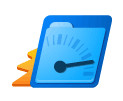I was excited to be invited to write a guest piece over at Bruce Clay Inc’s blog this week, and my article on “10 Image Optimization Tips for Local SEO” provides a few ideas to help further enhance a small business’s local search signals.
Bruce Clay is of course a well-known and well-established technical search marketing expert who helped pioneer the field, and I recall reading his work and sitting in on his presentations at industry conferences from the very early days of SEO, back when I was working in obscurity within a big mega-corporation. So, it was a particular honor for me to be invited to foist my thoughts on — I mean contribute a professional article on — his blog!
In all seriousness, I’ve used Bruce Clay’s tools over time, and I believe his LocalPack business listing distribution service is well worthwhile for any business beginning to establish its listing information in major online directories and local search engines everywhere. (And, FYI, this was not a paid endorsement a quid pro quo endorsement by me — Bruce Clay’s people have not asked me to write about their products nor link to them, and I have no financial connection with them.)

I’ve also particularly enjoyed reading work by the various other authors and editors who work at Bruce Clay Inc — Susan Esparza, Jessica Lee, and Virginia Nussey.
Thank you guys for inviting me in to participate on your blog, and making me feel welcome!

